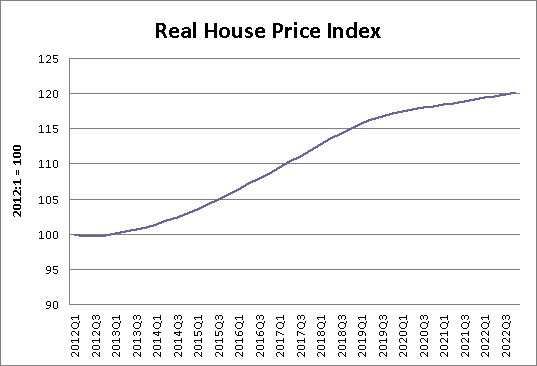March 19, 2012
The Congressional Budget Office (CBO) does not exactly have a stellar record when it comes to economic forecasting. Back in 2001 failed to see the collapse of the stock bubble that led to the recession that year even though it was already well underway. It forecast both a decade of solid economic growth and continued strong capital gains and capital gains tax revenue.
CBO also never noticed the housing bubble. In January of 2008, one month after the recession is now dated as having begun and a year and a half after the housing bubble had begun to deflate, CBO projected nothing but blue skies. The annual Budget and Economic Outlook showed nothing by continued growth, low unemployment and near balanced budgets.
This track record suggests that CBO’s economic projections warrant serious scrutiny. In carrying through such due diligence, we happened to notice an unusual aspect to the projection in the most recent Budget and Economic Outlook.
These projections show that Federal Housing Finance Administration’s House Price Index will rise by 20 percent over the course of the decade after adjusting for inflation. This projection is striking because it suggests a sharp divergence from the pre-bubble pattern to house prices.

Source: Congressional Budget Office and authors’ calculations.
Robert Shiller constructed a series on house prices in the United States from 1890. This series showed that from 1890 until the beginning of the housing bubble in the late 90s, house prices essentially tracked the overall inflation rate. CBO’s projection implies that it expects house prices will regain at least part of their bubble value.
This projection has some important implications for its economic projections. Higher house prices imply greater wealth. With the value of residential housing roughly equal to GDP at present, if house prices rise by 20 percent, it implies an increase in housing wealth equal to 20 percent of GDP. Assuming a wealth effect on consumption of 6 percent (i.e. homeowners spend another 6 cents annually for every additional dollar of housing wealth), this will translate into an increase in annual consumption of 1.2 percent of GDP.
If there is a multiplier on this consumption of 1.5, then the effect of CBO’s projected return of the bubble is to raise annual GDP by roughly 1.8 percent. Presumably higher house prices also imply greater levels of construction. If this 20 percent rise in real house prices increases construction by just 5 percent above trend levels, then the impact of this projected bubble is to raise projected GDP by more than 2.0 percentage points.
Of course CBO might be proven right and we may see house prices return to levels that are well above their long-term trend. However if they are wrong then it seems likely that the recovery will be even slower than CBO is now projecting, with the economy taking even longer to get back to its potential output and for the unemployment rate to fall back to more normal levels.







